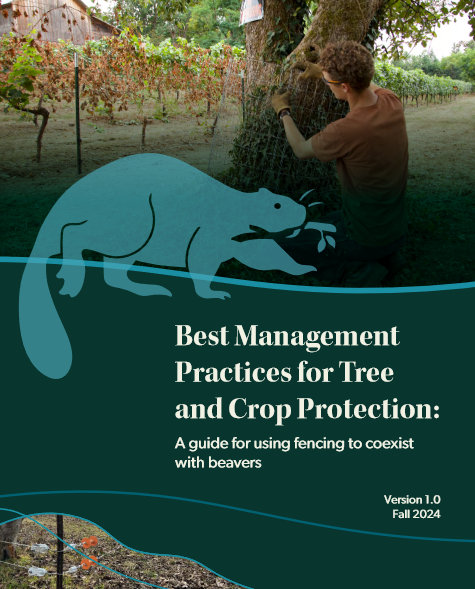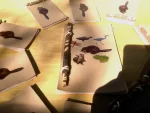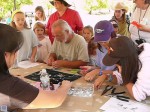
When I sat down with the numbers of depredation permits issued in California, one fact in particular kept catching my eye. The number of permits issued for Placer county. Contrary to expectation, it doesn’t have more water, or more people, or more culverts. It consists of seven towns (Auburn, Colfax, Lincoln, Roseville, Rocklin and Loomis) and about 20 unincorporated areas which all have more permission to kill beavers than anywhere else in the state. Nearly 7 times more, which turned out to be significant at the p =<.02 level. This, in case you didn’t take statistics, pretty much means it ain’t random.
So I thought I’d write the two charming representatives from Placer county who wrote them and say, hi my name’s Heidi and I’ve been looking at the depredation permits for beaver in California and I’m curious why you issued a third of them. Any thoughts? And I was more polite than I wanted to be, but still expected to hear nothing back.
To her credit, the most active member of the beaver-killing squad wrote back. She said Placer county has grown faster than any other region in the state, and permits to kill beavers are issued under 4181 which says that when property is damaged or (threatened)
The department, upon satisfactory evidence of the damage or destruction, actual or immediately threatened, shall issue a revocable permit for the taking and disposition of the mammals under regulations adopted by the commission.
She said we assess the situation and educate where we can and grant permits when necessary. What she did not say, and which I was dying to know, is what consisted of satisfactory evidence (a site visit? A photo? A phone call?) and how often did she actually turn down the request, telling the property owner to try something else?
(I’m guessing it’s a round number.)
She also thanked me for the resources I sent but said she already knew all about “beaver relievers” [sic] (Cross my heart – RELIEVERS she called them.) And I was sure it was a typo, or an UH-OH, but when I wrote Sherry Guzzi she pointed me to this paper by Colorado USDA scientist Nicholas Gerich, who (back in 2003) wrote a paper called “Working with beavers”, in which he outlines the pros and cons of several flow devices which he calls (wait for it!) “beaver relievers.”
YOU WILL ALWAYS HAVE TO DO REGULAR MAINTANCE!
Many of these solutions work well only if regularly cleaned. When these devices are not regularly inspected and maintained, they will fail with potentially disastrous results. Too many people think that once the device is installed that everything is solved and they can walk away from it.
It seems Nick was not very impressed with their success rate and said they had to be onerously maintained to even have a hope of working. But given his location I was curious if he’d ever met Sherri Tippie so I emailed him and asked. He said he had taken a class with Sherri shortly before that was written, and had gotten interested in the work when the beaver population “exploded” after the 1996 law. (Deja Vu much?)
In his experience flow devices “worked in some places” but “not in others”.
Now I know exactly how much maintenance our flow device has required, (none) but I didn’t know if it might have worked less well in Tahoe or Colorado, so I asked Mike and Skip. I particularly liked what Skip said,
As for the “physics” of the issue, beaver behavior and the properties of moving water are largely the same everywhere.
Now as to that exploding beaver population, I was particularly interested since I had learned that very refrain in Massachusetts many times. You can imagine how happy I was to see this in the paper yesterday from the Prescott Peninsula beaver count
The beavers are all right: Data returned from survey at restricted Prescott Peninsula
Researchers from the Department of Conservation and Recreation, along with affiliated volunteers, conducted the annual Prescott beaver survey Nov. 16 at the Prescott Peninsula — an area usually off-limits to humans. The survey data, which was compiled last week, shows 15 active inland beaver sites.
And they ran this:
I know graphs can be hard to read, but that high pointy part on the left shows the highest density of recorded beaver population in 1980. For us following along at home that was 16 years before voters insisted on those pesky humane traps. The population went up a little after 1996 but settled out with much lower levels than it used to support. Mind you this is just a particularly lush, inaccessible region in the state. Not the whole state. But knowing how beavers feel about trees, water and privacy we can guess its at least equivalent to what we would see all over if anyone was looking. Which means that every single person who tells you that the population of beavers exploded after they made conibear traps harder to use, should look behind them to see if their pants are on fire:
BECAUSE THEY’RE LYING.

A final update from the photographer Scott Stolensberg who graciously gave permission for me to use the photo and was so supportive he wants to donate to the silent auction! Thanks Scott!









































